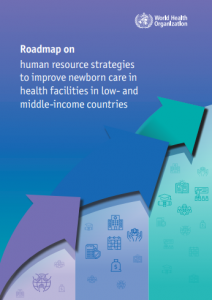
Deaths in the neonatal period (the first 28 days of life) now represent nearly half (47%) of all deaths of children under 5 years, with 2.5 million neonatal deaths (1) and 1.9 million stillbirths per year (2). In addition, more than 1.5 million newborns survive each year with long-term neurodevelopmental impairment (3). Almost all neonatal deaths (98%) occur in low- and middle-income countries (LMICs), and the highest rates of neonatal mortality are in countries with humanitarian crises. For every country to meet Sustainable Development Goal (SDG) 3.2 for neonatal survival by 2030, more investment is necessary in health facility care for all mothers and newborns (3). Newborns are the most vulnerable population in the world; they have specific needs and are a sensitive marker of the quality of care, as
they can die within minutes (4). Yet, of the 30 million newborns who require inpatient care every year, approximately half do not have access to neonatal care services and those who have access often receive care of suboptimal quality (3).
Cost-effective, proven interventions to reduce newborn morbidity and mortality are available, and most newborns can survive and thrive if they have access to high-quality health care, including as inpatients (3). Most births in LMICs now take place in health facilities, from 60% of all births in low-income settings worldwide in 2000 to 80% in 2016 (5), ensuring opportunities to improve newborn care soon after birth. It has been estimated that 1.7 million newborns could be saved each year with investment to ensure universal access to high-quality newborn care. Almost half of the effect would result from providing special and intensive hospital care for preterm, low-birth-weight or sick newborns (3). Scaling up interventions in LMICs will require innovations such as family-centered care, local adaptation, appropriate use of technology, financial protection and development of dedicated human resources.